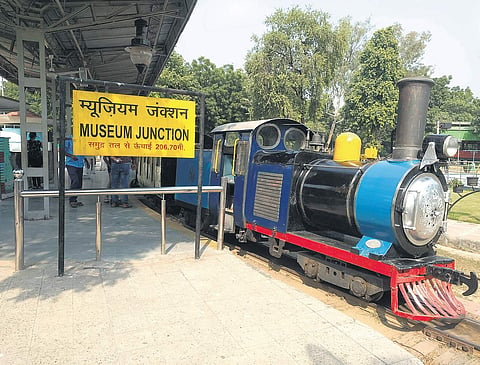

Many museums in India, both public and private, have a long way to go in becoming dynamic ‘incubators of history’ and thriving cultural centres. But a few revolutionary initiatives like C-DAC Pune’s digital collection management system or the #AskACurator campaign on social media are on par with international trends and raking in immense public appreciation and participation.
Vaibhav Chauhan, Founding Secretary, Sahapedia, tells us more the subject.
Many public museums in India have a dreary, forsaken air about them. Their sterility has been a deterrent for aficionados to visit and enjoy history. However, we’re now part of a fast-paced digitised world. How are Indian museums embracing this change?
Many central museums are digitising their collection. For instance, C-DAC Pune has designed and developed JATAN: Virtual Museum Builder, which is accessible for public viewing. The digital collections created using JATAN, are integrated in the national digital repository for giving public access through the national portal. Most museums are coming up on various social media platforms to engage the e-generation.
What will it take to make museums dynamic places for youth and local community brimming with activities, discussion forums, film screenings etc?
Museums must organise events for different user groups such students, tourists, general enthusiasts. Also, ‘humanising museums’ as spaces for stories, interacting with museum officials and staff, and running campaigns such as #AskACurator on social media. Museums should be able to reach out to organizations like ours, to help them curate and design interactive programs for community engagement. Government-run museums are usually held back by their protocols, lack of funds and maintainance of the collection gets the least sanction in annual budgets.
How is the culture of private museums different from public ones?
Private museums are generally personal collections of individuals. These museums are trying much harder to transmit their enthusiasm to visitors [than government-run ones]. They contextualise, they explain why an object is worthy of attention, lay out shops and cafes. Like the Heritage Transport Museum in Gurgaon. Private museums collaborate with industry experts to equip the spaces with technology and make them more relevant.
Museums abroad include wine-and-cheese, dance, and drama events in between the art objects. Have Indian museums articulated any similar out-of-the-box ideas?
Museums in India have also started such things. NGMA (Delhi) is open from 8pm to 11pm, on the last working day of every month. Even National Rail Museum in Delhi is open till 8pm on weekends. Few museums now host theatre shows. However, the technological revolution is yet to come in government run museums.
May 18 Programmes organised by Sahapedia
Baithak | Colonial Museums: An Inner History
Venue: National Rail Museum
Hosted by: Dr Anand Burdhan
Walk | Celebrating International Museum Day - Trailing Through National Museum
Venue: National Museum
Hosted by: Shagufta
Anubhuti (Visually impaired) Exploring the Tactile Galleries at Drishyakala Museum, Red Fort
Venue: Drishyakala Museum
Hosted by: DAG, Sahapedia
Anubhuti (Underprivileged) Exploring Woodcraft at the Rashtrapati Bhavan Museum
Venue: Rashtrapati Bhavan Museum
Hosted by: Shashank Gupta